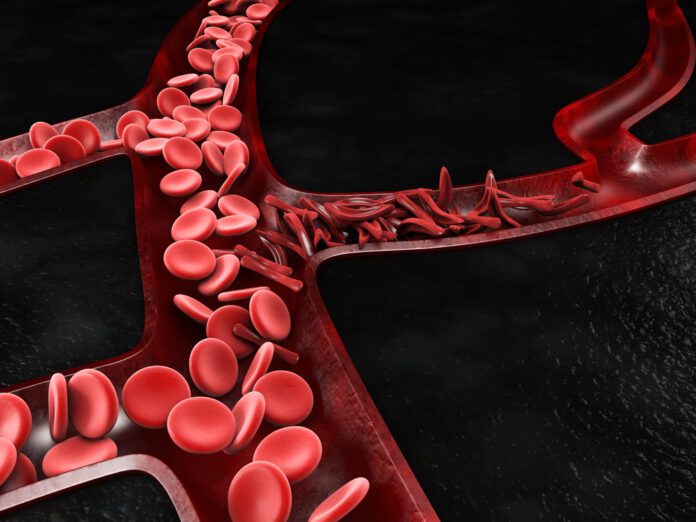You have anemia if the hemoglobin levels in your red blood cells fall below a certain level. Hemoglobin in red blood cells carries oxygen to every cell of the body. So if the levels are not ideal, a variety of signs and symptoms can arise. This helps make the diagnosis of anemia. But first, do you have an iron deficiency anemia? What causes it? Can Floradix Liquid Iron help?
There are many causes of anemia. Iron deficiency anemia is the most common of all. As the name implies, the condition results from insufficient iron in the body. That leads to a decreased amount of hemoglobin and reduced oxygen-carrying capacity of the blood. This is why an anemic patient feels tired and experiences shortness of breath. Different Types Of Anemia.
Causes Of An Iron Deficiency
Any condition that results in an imbalance between an iron intake and iron loss can result in anemia. These could include:
• an insufficient iron intake – if our diet lacks iron for prolonged periods, anemia may result. This is the most common cause of the iron deficiency. The dietary sources of iron include meat, eggs, dark green leafy vegetables and iron-fortified foods as flours and cereals
• internal bleeding – our red blood cells contain iron. If there is any reason for blood loss, be it slow and chronic or acute and fast, it can lead to iron deficiency. The example of slow and chronic blood loss is usually internal conditions like ulcers, types of cancers, hernia, polyps, etc. Acute blood loss may occur due to injury or as a result of surgery. Heavy menstrual cycles are another common cause of iron deficiency in women
• inability to absorb iron – iron is absorbed from the small intestine. Any condition that affects the absorption capability of small intestines leads to iron deficiency anemia. This can arise from chronic causes like celiac disease. A by-pass surgery of your intestine reduces the area of absorption, thereby resulting in less iron absorption. If the condition is not addressed in a timely way, it can cause iron-deficiency anemia
• pregnancy – pregnancy puts a strain on the nutritional reserves of a woman. That holds for iron reserves as well. A low diet without any supplementation increase a woman’s risk of becoming iron deficient and developing anemia
Risk Factors For Iron Deficiency Anemia
Iron deficiency anemia can occur at any age and affect either sex. Some people are more prone to developing iron-deficiency anemia. These people include:
- women of childbearing age
- pregnant women
- people with poor diets
- individuals who donate blood frequently
- infants who are not breast-fed
- children in their growing years on poor diets
- low-birth-weight babies and babies born prematurely
- vegetarians who do not replace meat with another iron-rich foods
Symptoms Of Iron Deficiency Anemia
The symptoms of moderate to severe iron deficiency anemia include:
- general fatigue
- weakness and lethargy
- pale skin
- shortness of breath
- dizziness, frequent headaches, lightheadedness on the sudden change of posture
- A tingling or crawling feeling in the legs
- tongue swelling or soreness
- cold hands and feet
- fast or irregular heartbeat
- brittle nails may develop in chronic stages
- unusual cravings for food items not considered nutritive as ice or dirt
- lack of appetite in children
- chest pain in severe cases
How To Check If You Have Anemia
Specific blood tests make the diagnosis of anemia. These include a complete blood picture related to:
- the size and color of red blood cells – the red blood cells are small in size with a pale color in iron deficiency anemia
- hemoglobin levels- the average hemoglobin ranges from 13.2 to 16.6 gm/dL in men and 11.6 to 15 gm/dL for women. Levels below this would indicate anemia
- hematocrit levels – the percentage of blood volume made up by red blood cells is called the hematocrit levels, which are low in anemia
- serum ferritin levels – ferritin is a protein and it stores iron in the body. Low serum ferritin indicates low iron stores in the body
Treatment Of Iron Deficiency Anemia
Treatment involves restoring the iron levels in the body. This is done by:
- oral Iron tablets
- consuming iron-rich diets
- supplementing with iron-fortified foods
- intravenous iron infusion
- blood transfusion
- treating the underlying cause of anemia as polyps, menstrual irregularities, etc.
Can Floradix Help?
Floradix is one of the best liquid iron supplements. It works by promoting the formation of red blood cells. It is easily absorbed through the small intestine. It does not cause constipation, being easy on the gut. This is because the liquid contains plant extracts that are known for their effectiveness and easy assimilation. For example, carrots, spinach and fruit juices of pears, red grapes, and other nutrient-rich fruits. Some things to note on Floradix:
• each 20 mL serving suffice the RDA for women of childbearing age
• the supplement is non-constipating
• it is free of alcohol, artificial additives, synthetic preservatives, lactose
• it is usually packaged in environment-friendly glass bottles
• supplements are kosher, non-GMO, vegetarian
• also available in tablets and yeast/gluten-free formula
Floradix liquid iron provides iron gluconate, a highly soluble iron compound. It is combined with iron-rich whole food and herbal extracts and co-factors such as vitamin C that enhance its absorption. So if you are looking for an iron supplement suitable for all, Floradix iron liquid is the one-stop solution for iron deficiency anemia.








